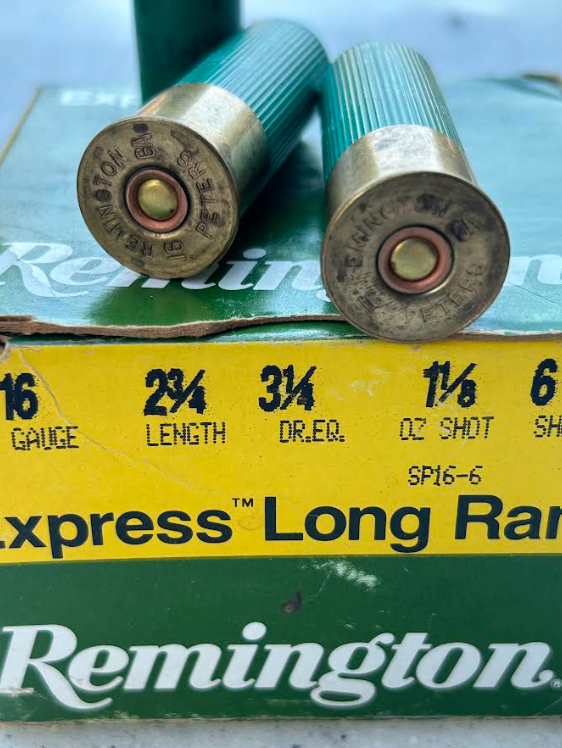Sweetness: Whether nostalgia or perfection 16-gauge shotguns still around
Published 11:30 am Friday, September 27, 2024

- 16-Gauge shotguns have always been around, but were a niche option because of their size and the lack of shell options and over-powered loads. (Steve Knight/Tyler Morning Telegraph)
The shotgun always sat in the same place, a corner in the old farmhouse bedroom next to the closet.
It was not a Sweet Sixteen by any means. It was plain Jane, more utilitarian like the tractors parked under the wooden shed outside. The tape wrapped around the barrel to hold the forearm on was a sign it had not be well-cared for. The same for the bulge in the barrel.
I only recently learned my cousin had picked it up used for about 25 bucks, then gave it to his dad in case he ever needed a gun around the farm.
He is pretty sure his father did not, but I did. It was the first shotgun I ever shot, and I loved it. Ok, maybe it was a love/hate relationship because when you are seven or eight years old, a double-barreled 16-gauge kicks like the proverbial mule. Its less than protective metal butt pad did not give much protection from the shells at the time.
Like most young love affairs, mine ended with the 16-gauge when I received a 12-gauge Remington 870 Wingmaster and later 20- and 28-gauge shotguns.
But I never forgot the 16, I was just never able to connect with one again. Truth is I am not the only one. In the 1940s 16-gauge ammo outsold 20-gauge two to one, but the 16-gauge’s days were already underway. The decline began 20 years earlier when skeet shooting became a thing. The rules for the game were designed for 12, 20, 28 and .410s, and thus the 16 was relegated to the sideline bringing a drop in sales.
Although the 16 has remained popular in European countries outside of England, sales slipped so much in this country that ammo manufacturers cut back production to the point that in an era prior to the internet search it became almost impossible to find. What was available lagged in quality and improvements compared to the efforts being put into other gauges. Because of its awkward placement between the 12 and 20 (actually closer in size to a 20), ammo manufacturers tried to make it a 12 gauge with oversized loads that produced a stronger kick. And the loads were geared to upland hunting while ignoring the non-toxic shot needs of waterfowlers. That made the guns even less popular, and at one point it looked like the 16 was headed to extinction.
The irony is that some shotgun experts say the 16-gauge is the perfect shotgun bore. According to the National Shooting Sports Foundation, the standard 16-gauge load is 1 1/8 ounce of shot. That is the same as the 20-gauge magnum load and an eighth ounce less than the standard 12-gauge. The magnum 16-gauge shell has 1 ¼ ounces of shot, which is the same as a standard 12 field load and the same as the 20-gauge three-inch magnum.
Still the theory is that with the 16-gauge is more field friendly, and with right load the shotgun’s recoil should be mild and the pattern full.
Not everyone agrees. East Texas shotgun instructor Steve Brown believes the 20 gauge can perform as well as the 16, and that with comparable loads the 12 gauge should have less recoil.
“Apples for apples, if you take a round that shoots 1,200 feet per second, if you shoot it through a smaller hole (16 gauge) it is going to build up more pressure. With more pressure pushing the same load out the barrel, and it is bound to be lighter gun, it is going to kick more,” Brown explained.
Either way, like many things, what was old is new again. Similar to the resurgence of the 28 gauge, 16-gauge shotguns have gained a little traction in recent years with upland bird hunters and sporting clays shooters looking for a lighter option than the 12. Gun manufactures, with higher end models like the Browning A5 down to more budget offerings from the TriStar G2 and Stevens 555, are producing 16s.
In the case of the A5 with a 28-inch barrel, the 16-gauge is substantially lighter than the 12-gauge, which can be argued makes it a better weight for upland hunts.
Ammo manufacturers are following the gun makers’ lead with limited, but improved offerings for both upland and now waterfowl shot. However, ammo is still difficult to find, and in most cases is more expensive than even 28-gauge shells.
Brown sees the new interest as more nostalgia, while others believe a well-balanced 16, a gun built on the proper frame using the right loads, is a quality gun for its intended purposes.
But the gauge is still an afterthought, ranking well behind the 12 and 20, and either just behind or ahead of the 28, depending on who you ask. It does outsell the .410, an expert’s gun whose shells have become ridiculously expensive.






